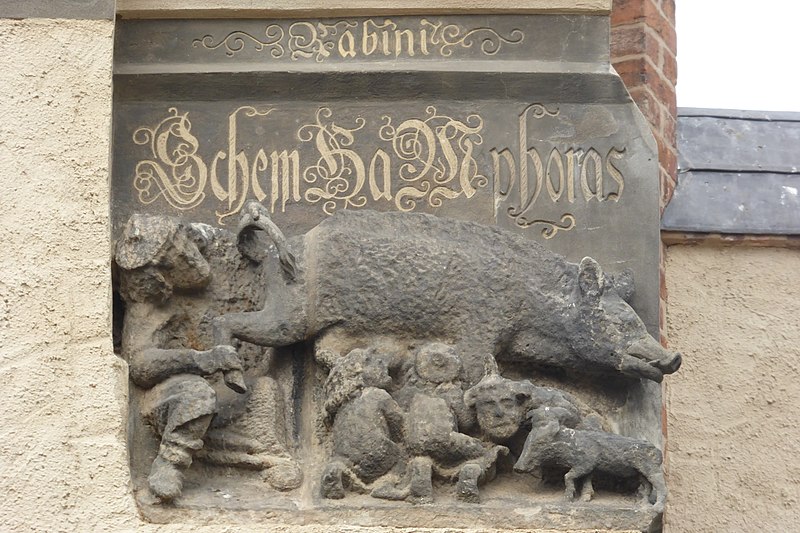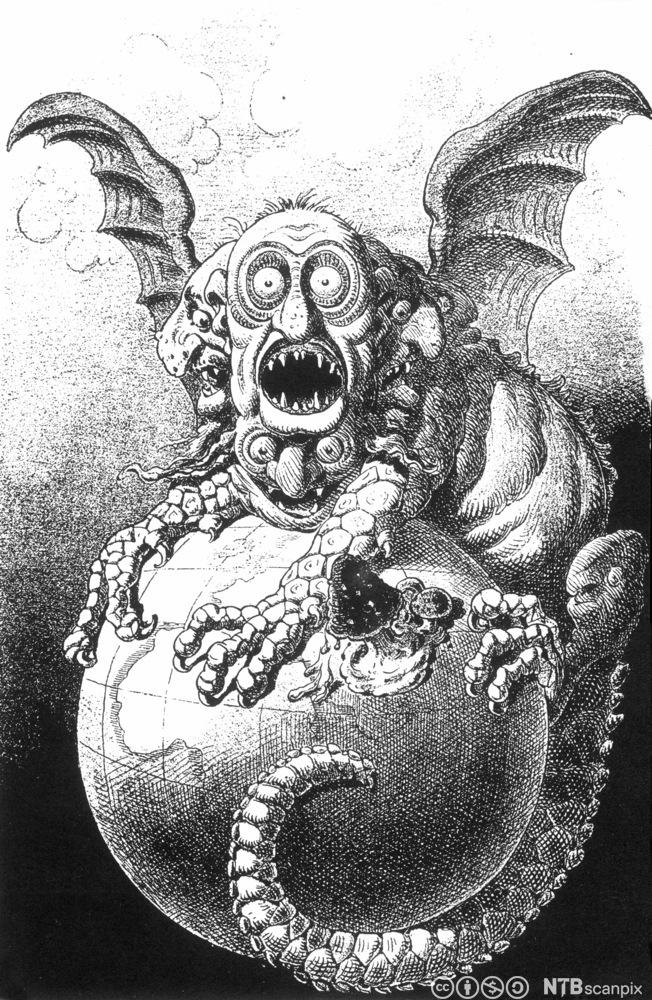Reading time: 4 minutes

Source: https://commons.wikimedia.org/wiki/
File:Judensau_Wittenberg.jpg
THINGS TO KNOW Judeophobia in Wittenberg 2020: The dispute about the ‘Judensau‘ at the city church divides the inhabitants of Lutherstadt Wittenberg. To better understand the creation of the relief it is important to learn more about the history of anti-semitism. Only few people know how long the hostility against Jews has really been anchored in people.
Historians can trace anti-semitism back to antiquity. The so-called “anti-jewish tradition” developed early on, starting with the conflictual process of the early Christians’ separation from the Jews. The Christians, who called themselves “true Israel”, denied the Jews their affiliation with the covenant of God.
They would have rejected Jesus as Messiah, betrayed him and crucified him and became not only enemies of the true faith but also adversaries of Jesus and Christianity. From then on, the story of the “god-murderers” was part of the Church’s doctrine of faith.
Judeophobia as part of popular piety
When Christianity became the state religion in the 4th century, the legal demarcation from Jews gradually began. The minority of Jewish citizens was assigned a lower rank in society. The church demanded an ever greater separation of the enemies of Christians, to the point of being ousted from public life. Soon they were to be clearly identified by their clothing as members of the people rejected by God. The freedom of movement of the Jews was also increasingly restricted. Many were persecuted and baptized by force. In addition, the Church now spread the negative image of the Jews in sermons, prayers and liturgy.
Anti-semitism became an integral part of popular piety. The bishops, who occasionally still preached the protection of the Jews, could no longer achieve any rights for Jewish people. Instead, violent riots and pogroms against the Jews increased. After further consolidation of the bad image through pilgrimages, folk tales and carnival games, more and more myths arose about the cruel people, who were held responsible for the plague by poisoning wells.
Yet it was not the Jews themselves who further fuelled the creation of myths. What else could they do but engage in small-scale and junk trade when they were completely excluded from agriculture, land ownership, craft guilds and Christian merchant guilds? The excluded people were finally considered obdurate and greedy for money. The “Jewish usury” had to be stopped, it was said.
Enemies of society

Source: https://ndla.no/subject:8/topic:1:182923/
topic:1:146909/resource:1:148798?filters=urn:
filter:ec288dfb-4768-4f82-8387-fe2d73fff1e1
With the weakening of the empire in the 13th and 14th centuries, the last imperial Jewish law lost its significance. The Jews were now exposed to the arbitrariness of smaller rulers, who demanded more and more special taxes from them or simply expelled them from the country. The further erosion of the imperial protection of the Jews and the religious, social and economic stigmatisation increased the waves of persecution. More and more Jews were expelled from England and France, Germany, Portugal and Spain and migrated to Eastern Europe or simply to more rural areas. It was not until the middle of the 17th century that more “of their kind” lived in Central Europe again.
Even in the emerging humanism and during the reformation there was no turning point in thinking about the anti-jewish tradition. Although the relationship between Christians and Jews relaxed somewhat after the Thirty Years’ War, there was no rapprochement. Now economic motives of hatred against Jews came to the fore, as the guilds increasingly feared Jewish competition. The Jew was and remained an enemy.
In the second half of the 19th century, the time of scientific breakthroughs, pseudo-sciences also found their way into public discussion and Judaism was finally “exposed” as an enemy of society with seemingly scientific facts. After their faith and rights had already been torn apart, Jews soon formed their own inferior race in the eyes of society. The only possibility of the so-called “healing” was seen as the removal of the Jewish elements from society, which culminated in the Nazi era.
Anti-semitism in Wittenberg
‘Sadly, but unchangeable‘, some of you will think now, but our ancestors have experienced this. Wittenberg also had some dark eras of judeophobia in its history. Not to mention that the effects of the Holocaust (the height of Judeophobia) could also be felt here.One more example is the Judensau at the city church.

Source: https://commons.wikimedia.org/wiki/File:
Statue_Marktplatz_(Wittenberg)Martin_Luther
(zweite_Bearbeitung).jpg
The relief from 1305 was not directed against the Jews as a “race” at that time; this term is an invention of National Socialism. In fact, it was intended to dissuade the Jews from their so-called “erroneous belief”. Pictorially depicted, so that it could also be perceived by ordinary people, it shows that Jews are looking for the “true knowledge of God” in the completely wrong place. Nevertheless, some inhabitans of Wittenberg today consider the ‘Judensau‘ to be offensive. But shouldn’t it rather be left hanging, as a sign of the past, as a reminder of anti-semitism and as a symbol that Wittenberg has changed?
Martin Luther, the reformer par excellence, also had a great resentment against Jewish fellow citizens. After the Jews had not accepted his Christian teaching, he developed into a Jew-hater. His diatribes around 1540, in which he called the Jews a nation of liars and “logically” demanded their extermination, had an enormous influence on later anti-semitism. Jews were parasites and conspirators by nature. ‘Such a desperate, blasphemous, poisoned, devilish thing it is about these Jews, if these 1400 years are our plague, pestilence and all misfortune (…). If I could, I would pierce them (…) in my wrath with the sword‘, he is Reporter top have said.
There was particularly much Judeophobia during times of National Socialism. You can read more about it here. Otherwise, you might also be interested in this: Holocaust 80 years on.
UPDATE: In 2022 it was decided that the Judensau may remain in Wittenberg.

